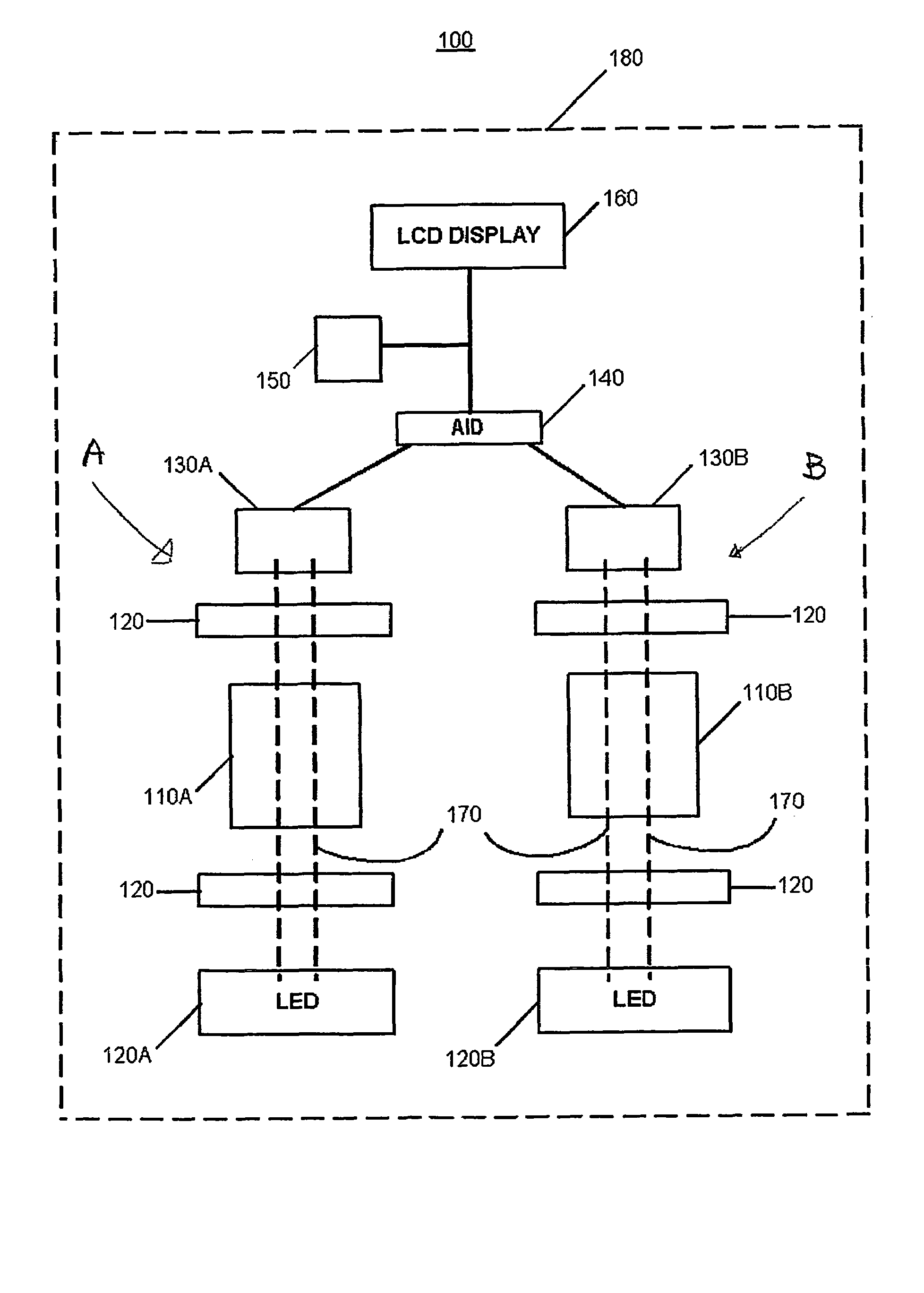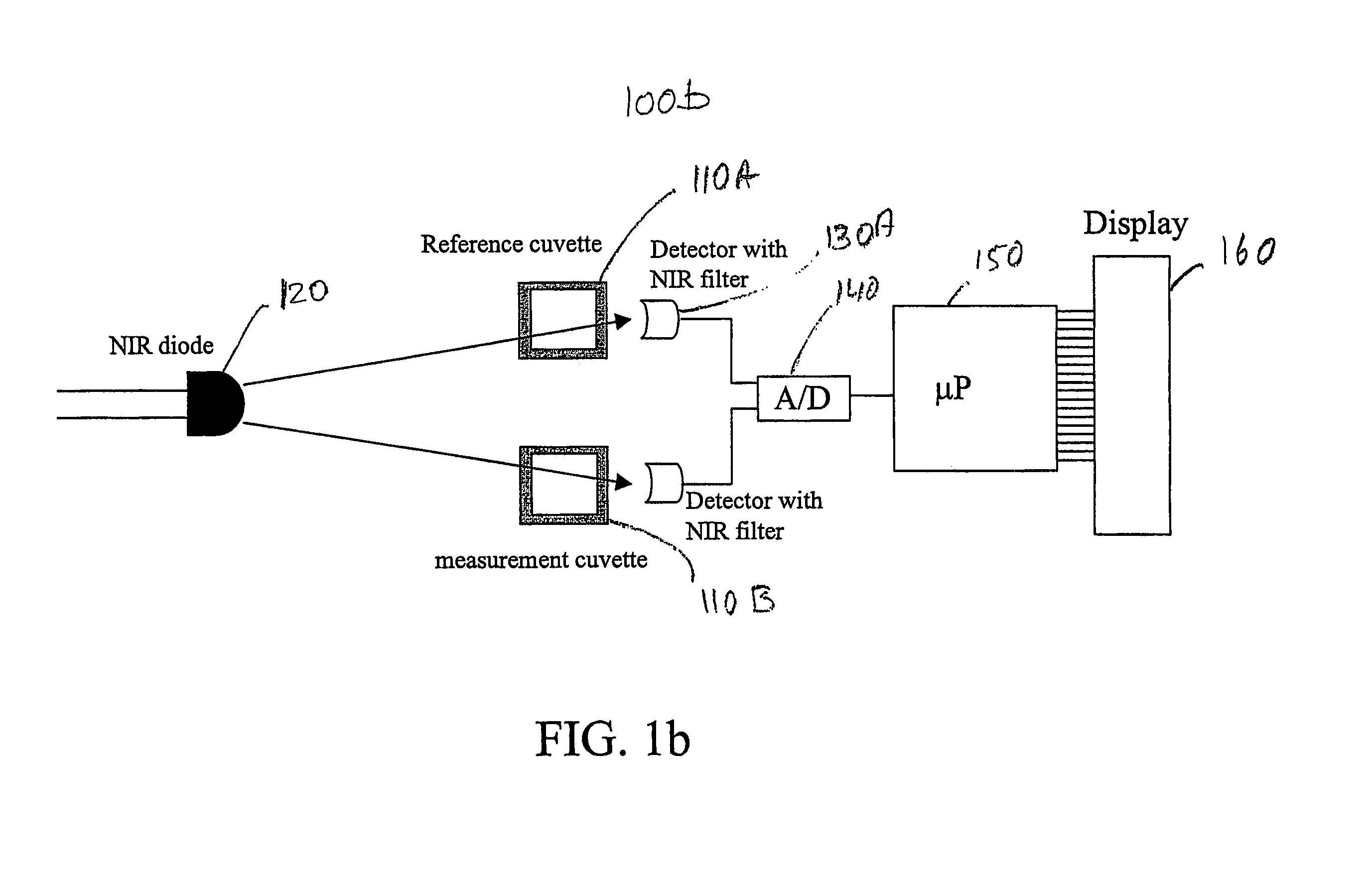Arsenic meter
a technology of arsenic meter and meter, which is applied in the direction of optical radiation measurement, instruments, spectrometry/spectrophotometry/monochromator, etc., can solve the problems of high detection limit, arsenic levels of at most a few tens of g/l are below the detection limit, and a health crisis that is unfolding
- Summary
- Abstract
- Description
- Claims
- Application Information
AI Technical Summary
Problems solved by technology
Method used
Image
Examples
Embodiment Construction
[0022]The present invention provides devices and methods for the detection of arsenic contamination in groundwater. The devices may be incorporated in kits that are suitable for use in the field, for example, as hand-held colorimeters.
[0023]Test and reference solutions are prepared from a water sample using arsenic-selective chemistries. An exemplary colorimeter measures the differential infrared-light absorption between a test solution and a reference solution to obtain a quantitative measurement of the arsenic concentration in the water sample. The chemical preparation methods used to prepare the test and reference solutions are based on an extension of the so-called “Johnson and Pilson method,” which is an analytical chemistry technique that was earlier developed for detecting arsenates in the presence of phosphates in seawater. See e.g. Johnson, D. L. “Simultaneous determination of arsenate and phosphate in natural waters,” Environmental Science and Technology, 5, pp. 411-14 (19...
PUM
| Property | Measurement | Unit |
|---|---|---|
| concentrations | aaaaa | aaaaa |
| wavelength | aaaaa | aaaaa |
| wavelengths | aaaaa | aaaaa |
Abstract
Description
Claims
Application Information
 Login to View More
Login to View More - R&D
- Intellectual Property
- Life Sciences
- Materials
- Tech Scout
- Unparalleled Data Quality
- Higher Quality Content
- 60% Fewer Hallucinations
Browse by: Latest US Patents, China's latest patents, Technical Efficacy Thesaurus, Application Domain, Technology Topic, Popular Technical Reports.
© 2025 PatSnap. All rights reserved.Legal|Privacy policy|Modern Slavery Act Transparency Statement|Sitemap|About US| Contact US: help@patsnap.com



